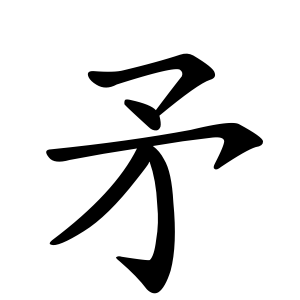矛
- spear, lance;
Etymology
Its origin is a pictograph that depicts the shape of a spear.
It denotes a type of spear, but there are subtle distinctions among 矛 (mo), 戈 (gwa), and 槍 (chang), all related to spears:
1. 矛 (mo) represents a weapon with a long shaft and sharp double edges, suitable for both stabbing and cutting. It can be seen as a compromise between 戈 (gwa) and 槍 (chang).
2. 戈 (gwa) has a blade or spearhead that extends sideways rather than straight, used in ancient warfare like chariot battles to hook and slash enemies.
3. 槍 (chang) is specialized for stabbing, featuring a sharp metal tip fixed on a long pole.
Historically, spear blades were made of bronze but transitioned to iron during the Han Dynasty.
Usage in Korean
In modern Korean and across East Asian languages, spear-type weapons are generally referred to as 창槍 (chang), making 矛 a rarely used character today. It mainly survives in two fixed expressions:
1. 모순 (矛盾) meaning "contradiction"
2. 장팔사모 (丈八蛇矛) referring to a legendary "eight-zhang-long snake spear"
These usages are frequent enough that 矛 remains included even in intermediate-level Korean language proficiency resources.
Words that derived from 矛
- 弓戈弓竹 (NINH)
- ⿹ 予 丿
